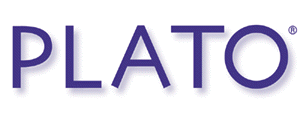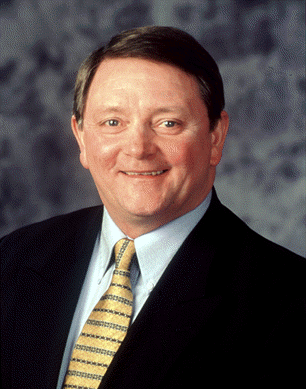|
|
PLATO Learning, Inc. (TUTR) |
|
|
CEOCFO CEOCFO Monthly Analyst |
"To print this page go to file and left click on print" PLATO Learning has a vision and
strategic plan to become the primary player in K-12 Bio of CEO, PLATO Learning’s headquarters are located in Bloomington, Minnesota. In addition, they have several U.S. sales offices, Canadian offices, and a UK subsidiary in London. CEOCFOinterviews: Mr.
Murray, please give us a brief history of PLATO Learning. Mr. Murray: “The
Plato name and product started in 1963, as part of a National Science Foundation grant,
for the University of Illinois. It was the first online computer-based education program.
Control Data Corporation picked up the rights in the late sixties and early seventies and
started to commercialize it. Unfortunately, for Control Data, they were about fifteen
years ahead of their time. They were very innovative and had a lot of computer technology,
but the telecommunications systems were running at fifty baud, so that the bandwidth
wasn’t there; the graphics were primitive, although they did manage to run it
worldwide on various main-frame computers and other dedicated hardware systems that they
built. CEOCFOinterviews: What are the main products that you offer? Mr. Murray: “We
have a range of products, but math, reading and writing are the main products we offer.
Three years ago, we acquired a science company because under ‘No Child Left
Behind’ science will become the fourth subject that is assessed in schools as part of
a formalized assessment program and that will be implemented by 2005-2006. We acquired our
science product in the summer of 2001. Last year we enjoyed revenues of six-and-a-half
million dollars from that product set. We believe science is going to be a fast-growing
market for us. Math, reading, and writing are the primary subjects; everything from
third-grade, up to college level. CEOCFOinterviews: What is it that you are selling? Mr. Murray: “Typically what we sell, is a license to use our software products as individual CDs or on local or wide area networks or over the internet. All four thousand hours of our curriculum, which we have online is deliverable over the Internet. People can buy a perpetual license to use the products on a number of computers under license or they can sign up for an annual per-student of per-port fee to use our products. The products are aligned to the state and federal education standards, and with the online curriculum, which teaches the mathematical, reading and writing subjects, and allows the student to practice online using problem solving and reading strategy techniques. They also offer a wide range of assessments tied to the standards, so that once students go online and go through our products, they not only learn the material from a concepts, facts and principles standpoint, they learn the application of those skills typically in a work-place environment, so that it has meaning beyond the school years. The teachers and school administrators can print reports from our system, showing by-student, by school, by-class, by-district, and the performance of those students using our products against the standardized tests.” CEOCFOinterviews: Is that important to the schools? Mr. Murray: “It is extremely important under ‘No Child Left Behind’. Several years ago, accountability started to sweep the nation and under the accountability requirement, schools must show adequate yearly progress against the previous year’s results. Failure to do so would put them on a watch list and could ultimately result in the school being taken into government control, turned around and then put back in the hands of educators. People can lose their jobs if accountability standards are not met. It is extremely important to educators and to the broader community.” CEOCFOinterviews: Are you selling to school districts? Mr. Murray: “Historically we have sold to individual schools. Over the last number of years as we as a company have gained more prominence and reputation and more installed sites; we have seen more districts use their buying power to get better acquisition deals for the district. ‘No Child Left Behind’ is talking about the use of technology at the district level, not only for online curriculum and assessment but also for teacher training, professional development, teacher accreditation and the reporting of that data on a desegregated basis. School districts used to only report at the district level or the building level, in terms of grades and tests, now they have to report based on ethnics and various other criteria.” CEOCFOinterviews: Do your customers start with math and then add on some of the other products? Mr. Murray: “There are some clients that only buy a math program because that is their specific focus, other clients will probably buy the core products of math, reading and writing, and some will add science and social studies. Some of the larger districts and those that have been using technology for some time will typically go for a more full-scale approach, and they will include all the other things we have like life skill, job sills, social skills, and other topics. They will typically enter into an agreement, which buys them licensed rights to access a number of licenses or PC accesses for a particular package. Let’s say we have ten packages, some school districts will come in and want twenty computers per school building for package three, because that is what we can afford this year and that is how we want to get started because we can’t do it all at once; and in subsequent years, they will come back. Historically for the past five or six years, we have shown that fifty plus percent of our annual billing is to people we have billed before.” CEOCFOinterviews: How do you reach the schools, and how do you get them to sit up and take notice? Mr. Murray: “We
have a large direct sales organization of seventy-five sales people, fifteen sales
management and about twenty-five junior sales associates. We also for the last couple of
years have a team of about thirty inside telephone sales people to do service and support,
add-on sales, and certain products that can be sold over the phone using web-casting. We
have a marketing team of about twenty-five people. Most of it is direct selling. Much of
it is reference selling. CEOCFOinterviews: Is there much competition for Plato’s products? Mr. Murray: “There
are really two types of competition and the education industry is really fragmented. There
are ten to twelve what I would call good size players in the field, as well as a lot of
very small, regionalized education providers. There has been a lot of consolidation in the
industry in the last few years and I think the consolidation will continue. For years,
many companies have been talking about being a K-12 provider, where in fact that has not
been true. Most companies have been providing only to the elementary sector or only the
high school or college sector. CEOCFOinterviews: Why chose Plato over the competition? Mr. Murray: “We strongly recommend side-by-side evaluations of our products and our competition’s products, because we believe our product stands up from an educational structure, integrity, a pedagogy standpoint, and sheer breadth, volume and the design of the product. We also have many evaluations that have been done over a number of years, which is becoming increasingly important because under ‘No Child Left Behind’ the law demands that educational technology software products come from a research basis. Everything that we build, we don’t build in a vacuum on our own; we invite people from universities, teacher and students to be part of our design process and assessment and test process, to be sure we have the right research base in there. Educators want to see research and data.” CEOCFOinterviews: How much of your business is other than K-12? Mr. Murray: “We did probably about fourteen million dollars last year, probably about 19% of our business in the post-secondary or adult level.” CEOCFOinterviews: Is that a growing area for you? Mr. Murray: “That is very much a growing area; the unfortunate thing is that 9/11 had an impact on the economy. The new ‘No Child Left Behind’ has not been without confusion. There has been a delay in the release of funds for K-12, which resulted last year in the down-turn of the market compared to the previous four or five years of 30% top-line growth for us. Last year we grew at 6%, the market as a whole grew at 1% and most of our direct competition saw revenues decline at 10-25%.’ CEOCFOinterviews: Is there a copyright or proprietary technology with the software you produce? Mr. Murray: “We are open architecture systems, which is one of the benefits of coming from Control Data. We use standard hardware and everything is off the shelf. What we do from the software perspective is when we develop software we use industry standard tools, all of the different web tools. We tend to use those to build our own architecture, which we consider proprietary because that’s the intellectual property, of how we go about building our products for quick development and ongoing maintenance and ease-of-use by clients. By and large, we are open architecture and not proprietary.” CEOCFOinterviews: Will you tell us about the financial position of the company? Mr. Murray: “The
Company is in good financial shape, but you would need to look back five years to get you
a sense of that. In 1997, the company had revenues of thirty-six million and losses of
twenty million. Some things were not working right and we reinvented the company and did a
number of things to get costs out of the business and within twelve months, our revenues
had gone up by 14% and we had gone from a twenty million loss to a three million profit.
We continued on that growth path of 25% or so of top-line revenue growth, and larger
30-40% earnings growth on the bottom-line until the impact of 9/11. CEOCFOinterviews: Do you see any more acquisitions in the future? Mr. Murray: “We are looking at opportunistic acquisitions. We have a very large product line, but there are always areas that we should be looking to plug gaps or add a little more. We also have some strategic acquisition activity that we are looking at. We are not in a rush. There are some things we can do to better serve the K-12 and broader community environments. We continue to look at the acquisition space. This is an interesting time to look at acquisitions because unfortunately very few companies in the education space make money. Most of them are losing 10,20, or 30, million dollars a year.” CEOCFOinterviews: What are your biggest challenges? Mr. Murray: “One of the biggest challenges is the federal government and state budgets getting back on track, and returning to a good economy, and that is dependent on many things including a war with Iraq. I think it is just a case of being out there and pulling together the acquired companies and integrating them. CEOCFOinterviews: Are you selling for under book value now? Mr. Murray: “Our
stock price is just under six dollars at the moment!” Mr. Murray: “We developed a strategic plan eighteen months ago, which is a three-year rolling plan, that firmly looks to us as being the leader of K-12. Our internal development, staff training and motivation are all focused around our mission, values and corporate vision, which is to become the primary player in K-12. Financial results are one aspect that shareholders should look at. I think, also, from a company perspective, people should look at the fact that many of our employees here, have been here 10-20 years. We have a strong team here. People here are very passionate about education; at least one-third if not more of our workforce are former educators.” disclaimers |


